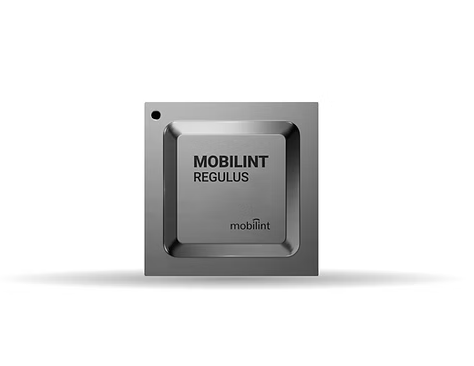Manufacturers
Applications
Solutions
Register your interest
In the Mobilint Regulus NPU: 10 TOPs at 3 Watts for Edge AI
The Mobilint Regulus NPU is a system-on-chip built for power-constrained AI deployments where efficiency is just as critical as raw performance. Delivering 10 TOPs at 3W, it strikes a balance that makes it ideal for drones, portable medical devices, and smart vision systems that cannot accommodate bulky batteries or high-thermal hardware.
Developers working with the Mobilint Regulus NPU can access a full-stack ecosystem that lowers the barrier to entry for edge AI. Mobilint’s model zoo already includes over 300 validated networks, with support for popular architectures such as YOLO v8/v9 and MobileNet. Engineers can also import models from frameworks like TensorFlow, PyTorch, or ONNX. The QB SDK provides an in-house compiler that optimises and quantises workloads for Mobilint’s architecture, achieving minimal latency while retaining over 99% accuracy.
Eco-efficiency is a core advantage of the Mobilint Regulus NPU. With billions of devices expected to run AI workloads, energy consumption is a global challenge. Regulus reduces this impact by performing advanced inference locally at low power, cutting down data centre usage and long-distance data transfer. By eliminating reliance on cloud infrastructure, it reduces latency, lowers operating costs, and minimises carbon emissions tied to remote processing.
On the hardware side, integration is supported through a Yocto-based Linux environment, which includes a full board support package, drivers, and peripheral compatibility. The Mobilint Regulus NPU interfaces with MIPI CSI/DSI, USB, Ethernet, ISPs, and audio codecs, enabling deployment across a wide range of industrial and consumer embedded products. Demonstrations show multiple AI models—such as object detection, pose estimation, and facial recognition—running simultaneously on a single Regulus chip without exceeding the 3W envelope.
Looking ahead, Mobilint plans to extend support for transformer-based workloads and LLMs. This will allow future ML systems to handle natural language processing and multimodal reasoning, pushing embedded AI into more advanced use cases. Much like GPUs became indispensable for visual computing, NPUs like the Mobilint Regulus NPU are positioned to become a standard in next-generation processor architectures.
Register your interest
In the Mobilint Regulus NPU: 10 TOPs at 3 Watts for Edge AI
